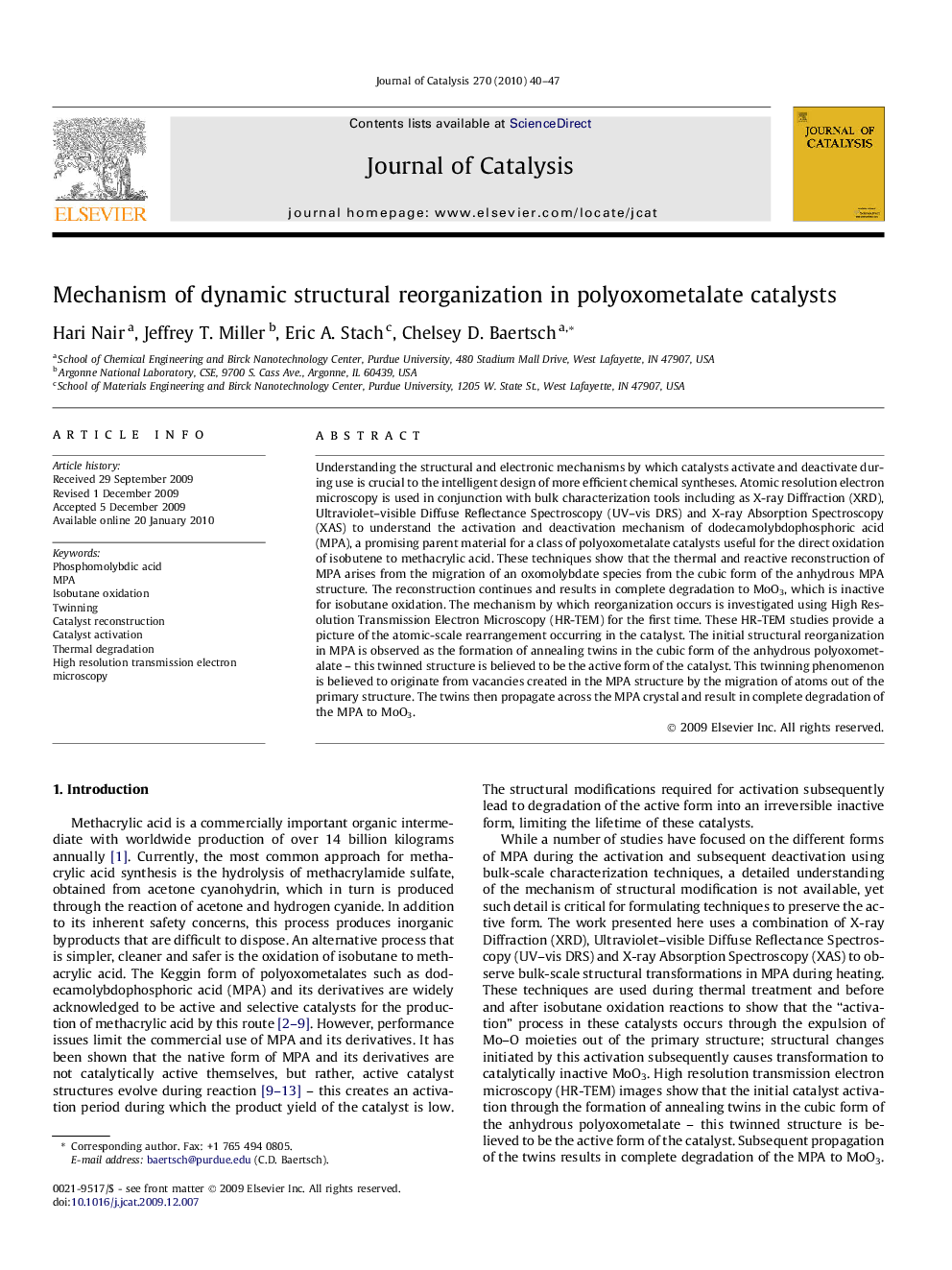| کد مقاله | کد نشریه | سال انتشار | مقاله انگلیسی | نسخه تمام متن |
|---|---|---|---|---|
| 62375 | 47637 | 2010 | 8 صفحه PDF | دانلود رایگان |

Understanding the structural and electronic mechanisms by which catalysts activate and deactivate during use is crucial to the intelligent design of more efficient chemical syntheses. Atomic resolution electron microscopy is used in conjunction with bulk characterization tools including as X-ray Diffraction (XRD), Ultraviolet–visible Diffuse Reflectance Spectroscopy (UV–vis DRS) and X-ray Absorption Spectroscopy (XAS) to understand the activation and deactivation mechanism of dodecamolybdophosphoric acid (MPA), a promising parent material for a class of polyoxometalate catalysts useful for the direct oxidation of isobutene to methacrylic acid. These techniques show that the thermal and reactive reconstruction of MPA arises from the migration of an oxomolybdate species from the cubic form of the anhydrous MPA structure. The reconstruction continues and results in complete degradation to MoO3, which is inactive for isobutane oxidation. The mechanism by which reorganization occurs is investigated using High Resolution Transmission Electron Microscopy (HR-TEM) for the first time. These HR-TEM studies provide a picture of the atomic-scale rearrangement occurring in the catalyst. The initial structural reorganization in MPA is observed as the formation of annealing twins in the cubic form of the anhydrous polyoxometalate – this twinned structure is believed to be the active form of the catalyst. This twinning phenomenon is believed to originate from vacancies created in the MPA structure by the migration of atoms out of the primary structure. The twins then propagate across the MPA crystal and result in complete degradation of the MPA to MoO3.
The molecular rearrangement of phosphomolybdic acid during thermal treatment is shown to occur through the formation and transmission of annealing twins responsible for its activation and deactivation when used as a catalyst for isobutane oxidation.Figure optionsDownload high-quality image (167 K)Download as PowerPoint slide
Journal: Journal of Catalysis - Volume 270, Issue 1, 22 March 2010, Pages 40–47